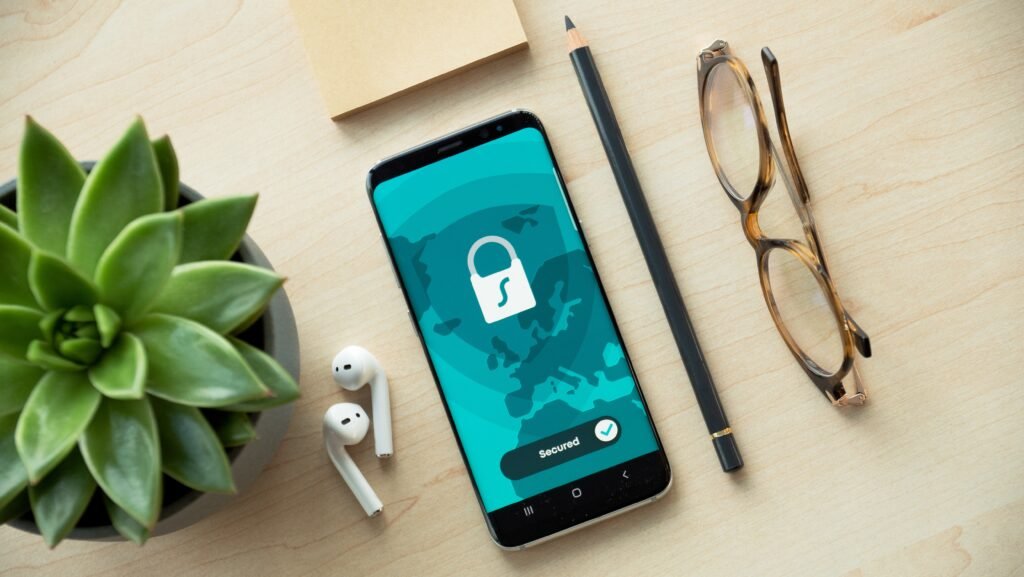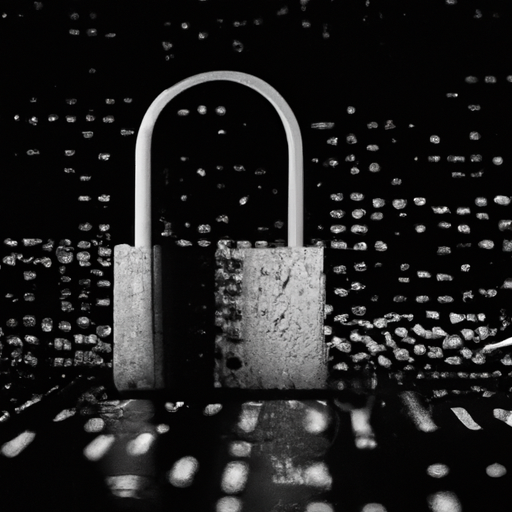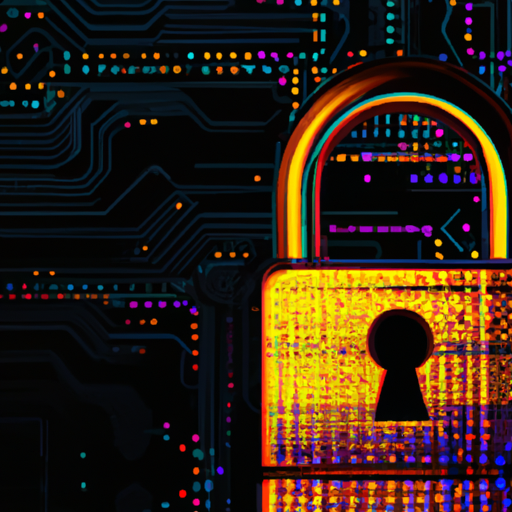In this article, we will discuss various ways to safeguard your gadgets from data breaches. You will learn practical tips and strategies that will help you protect your personal information and prevent unauthorized access to your devices. From using strong passwords and two-factor authentication to regularly updating your software, we will explore different security measures to ensure the safety of your gadgets. By the end of this article, you will have a better understanding of how to keep your gadgets secure and keep your data safe.
Ways to Safeguard Your Gadgets from Data Breaches
In today’s digital age, our gadgets hold a wealth of personal and sensitive information. From smartphones to laptops and smart home devices, these gadgets are vulnerable to data breaches that can have serious consequences. It is essential to understand the risks associated with data breaches, recognize the signs, and implement best practices to protect our gadgets from these threats.
What is a data breach?
A data breach is an incident where unauthorized individuals gain access to sensitive, confidential, or personal information stored on digital devices or computer systems. This breach can result from various factors, including hacking, malware, or even human error. The information obtained in a data breach can include financial data, social security numbers, login credentials, and more.
Why are data breaches a concern?
Data breaches pose significant risks to individuals and organizations alike. They can lead to identity theft, financial loss, reputational damage, and even legal consequences. The fallout from a data breach can be long-lasting and devastating, making it imperative for everyone to take steps to protect their gadgets.
How do data breaches affect gadgets?
Data breaches can have far-reaching consequences for our gadgets. They can compromise the security and privacy of our data, resulting in unauthorized access or misuse. Beyond the immediate impact, data breaches can also affect the performance and functionality of our gadgets. This can lead to slower device speeds, increased battery consumption, and overall reduced usability.
Common Types of Gadgets at Risk
Now that we understand the dangers of data breaches, let’s explore the common types of gadgets that are particularly vulnerable to these threats.
Smartphones
Smartphones are ubiquitous in our daily lives and store a myriad of personal information. From contacts and messages to banking apps and social media accounts, our smartphones are a treasure trove of sensitive data. With the increasing sophistication of cybercriminals, it is crucial to secure our smartphones to mitigate the risk of data breaches.
Laptops and computers
Laptops and computers are often used for work-related tasks, making them rich targets for hackers aiming to gain access to corporate networks. Additionally, these devices store personal information such as passwords, banking details, and private documents. Protecting our laptops and computers from data breaches should be a top priority.
Tablets and e-readers
Tablets and e-readers provide convenience and portability, but they also store personal data and are susceptible to data breaches. Whether it’s personal photos, emails, or financial information, we need to apply the same level of security measures to these gadgets as we would with our smartphones and computers.
Smart home devices
Smart home devices, including voice assistants, smart door locks, and security cameras, offer convenience and automation. However, they also collect sensitive data about our daily routines and preferences. Securing these devices is essential to prevent the exposure of our personal information and protect our homes from unauthorized access.
Wearable devices
Wearable devices, such as fitness trackers and smartwatches, have become increasingly popular. These gadgets often track personal health data, location information, and more. It is crucial to safeguard the information collected by these devices to prevent potential data breaches.

Recognizing the Signs of a Data Breach
Being able to identify the signs of a data breach is vital in taking immediate action to mitigate the damage. Here are some common indicators that your gadget may have been compromised:
Unusual device behavior
If you notice unusual behavior on your gadget, such as sudden freezing or crashing, it could be a sign of a data breach. These irregularities may indicate that unauthorized programs or malware have infiltrated your device.
Unexpected data usage
A sudden increase in data usage or excessive battery drain can indicate that your gadget has been compromised. Malicious software may be running in the background, consuming resources and transmitting data without your knowledge.
Account or login issues
If you experience difficulties logging into your accounts or notice unauthorized access attempts, it may be a warning sign of a data breach. Cybercriminals may have obtained your login credentials and are attempting to gain access to your personal information.
Unrecognized transactions
Review your financial statements regularly and pay attention to any unrecognized transactions. Unauthorized charges or withdrawals from your accounts can be a clear indication of a data breach.
Increased spam or phishing attempts
If you suddenly start receiving a significant amount of spam emails or phishing attempts, it may be a result of a data breach. Cybercriminals often use compromised information to target individuals with phishing scams or other malicious activities.
Best Practices for Securing Your Gadgets
To protect your gadgets from data breaches, it is important to follow these best practices:
Keep your devices updated
Regularly update your gadgets’ operating systems and applications. These updates often include security patches and bug fixes that address vulnerabilities that could be exploited by hackers.
Use strong and unique passwords
Use strong, complex passwords for all your accounts and devices. Avoid using easily guessable passwords such as “123456” or “password.” Additionally, ensure that each account has a unique password to mitigate the impact of a potential data breach.
Enable two-factor authentication
Two-factor authentication adds an extra layer of security to your accounts. This feature requires you to provide a second form of authentication, such as a fingerprint or a one-time code sent to your smartphone, in addition to your password.
Be cautious with public Wi-Fi
Public Wi-Fi networks are often unsecured, making them prime targets for hackers. Avoid connecting to public Wi-Fi networks or use a virtual private network (VPN) to encrypt your connection and protect your data.
Avoid suspicious websites and downloads
Exercise caution when browsing the internet and downloading files. Stick to reputable websites and only download files from trusted sources to minimize the risk of malware infections.
Regularly back up your data
Regularly backing up your data ensures that even if your gadget is compromised, you won’t lose all your important information. Use cloud storage or external hard drives to create backups and store them in a secure location.

Protecting Gadgets from Malware
Malware is a common threat to the security of our gadgets. Protecting against malware requires implementing preventive measures and adopting safe online practices.
Install reputable antivirus software
Choose a reputable antivirus software and keep it up to date. Antivirus software scans for and detects malware, providing an additional layer of protection against data breaches.
Scan devices for malware
Regularly scan your gadgets for malware using your antivirus software. This should be done both for new downloads and periodically to ensure no hidden malware is lurking on your devices.
Avoid downloading apps from unknown sources
Only download apps from official app stores or trusted sources. Sideloading apps from unknown sources can expose your gadgets to malware or other security risks.
Be vigilant with email attachments
Exercise caution when opening email attachments, especially if they come from unknown or suspicious senders. Malicious attachments can carry malware that can compromise your gadgets and lead to data breaches.
Use a firewall
Enable the built-in firewall on your gadgets or install third-party firewalls to monitor incoming and outgoing network traffic. Firewalls act as barriers between your gadgets and potential threats, helping prevent unauthorized access and data breaches.
Securing Data on Gadgets
Protecting the data stored on your gadgets is as crucial as safeguarding the gadgets themselves. Here are some measures to secure your data:
Encrypt your device’s storage
Use encryption to safeguard the data stored on your gadgets. Encryption converts your data into a coded format that can only be accessed with the encryption key, adding an extra layer of security against potential breaches.
Enable device tracking and remote wiping
In case your gadget is lost or stolen, enable device tracking and remote wiping features. These features allow you to locate your device and, if necessary, remotely erase all data to prevent unauthorized access.
Avoid storing sensitive information on your device
Minimize the amount of sensitive information stored directly on your gadgets. Instead, consider using secure cloud storage or encrypted external devices to store important files.
Use secure cloud storage
When using cloud storage services, make sure to choose reputable providers that employ strong security measures. Enable two-factor authentication for your cloud storage accounts to further protect your data.
Regularly delete unnecessary data
Periodically delete data that is no longer needed. Removing unnecessary files reduces the potential impact of a data breach and helps maintain optimal device performance.

Educating Yourself and Others
Education plays a critical role in safeguarding gadgets and preventing data breaches. By staying informed and promoting awareness, we can mitigate the risks effectively.
Stay informed about current threats and trends
Keep up to date with the latest cybersecurity threats and trends. Stay informed through reliable sources such as technology news websites, cybersecurity blogs, and official notifications from device manufacturers.
Teach others about data security
Share your knowledge about data security practices with friends, family, and colleagues. Providing education and guidance on secure practices can help protect others from falling victim to data breaches.
Promote safe browsing habits
Encourage safe browsing habits, such as avoiding clicking on suspicious links, using HTTPS-enabled websites, and being cautious when sharing personal information online.
Raise awareness about phishing and social engineering
Phishing and social engineering are common tactics used by cybercriminals to trick individuals into divulging sensitive information. Educate yourself and others about these techniques to minimize the risk of falling victim to them.
Monitoring and Responding to Data Breaches
Even with the best preventive measures, data breaches can occur. It is important to monitor your gadgets for any signs of compromise and take swift action if a data breach does occur.
Regularly check for data breaches
Regularly check for news and updates about data breaches. Websites such as Have I Been Pwned can notify you if your email or username appears in a known data breach, allowing you to take immediate action.
Take immediate action if your data is compromised
If you discover that your data has been compromised, change your passwords immediately and notify relevant parties, such as your bank or credit card issuer. Consider enlisting professional help to mitigate the impact of the breach and prevent further damage.
Consider identity theft protection services
Identity theft protection services offer an additional layer of security by monitoring your personal information for any signs of misuse or unauthorized activity. Consider investing in these services for added peace of mind.
Monitor your accounts for suspicious activity
Regularly review your financial and online accounts for any unexpected activity. Report any suspicious transactions or unauthorized access to the respective organizations and take steps to secure your accounts.

Legal and Regulatory Compliance
Understanding legal and regulatory compliance is important for individuals and organizations alike to ensure they are meeting their responsibilities and protecting their data appropriately.
Know your rights and responsibilities
Educate yourself about your rights and responsibilities regarding data privacy and protection. Be aware of the regulations and laws that are applicable in your jurisdiction.
Understand applicable data protection laws
Different countries and regions have varying data protection laws. Familiarize yourself with the laws relevant to your location to ensure compliance.
Comply with industry regulations
If you work in an industry that has specific regulations concerning data protection, ensure that you adhere to those regulations. This includes implementing necessary security measures and following specific protocols.
Seek legal advice if needed
If you are in doubt about your legal obligations or your rights in the event of a data breach, seek legal advice. Consulting legal professionals knowledgeable in data privacy can help ensure you are taking the necessary steps to protect your gadgets and personal information.
Conclusion
Protecting our gadgets from data breaches is essential in today’s digital age. By following best practices, staying informed, and taking proactive measures, we can significantly reduce the risk of a data breach. Remember, safeguarding your gadgets is not only about personal privacy but also about protecting sensitive information and preventing potential financial and reputational damage. Stay vigilant, secure your devices, and prioritize data security to keep your gadgets safe from data breaches.

